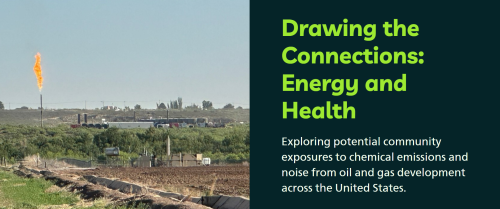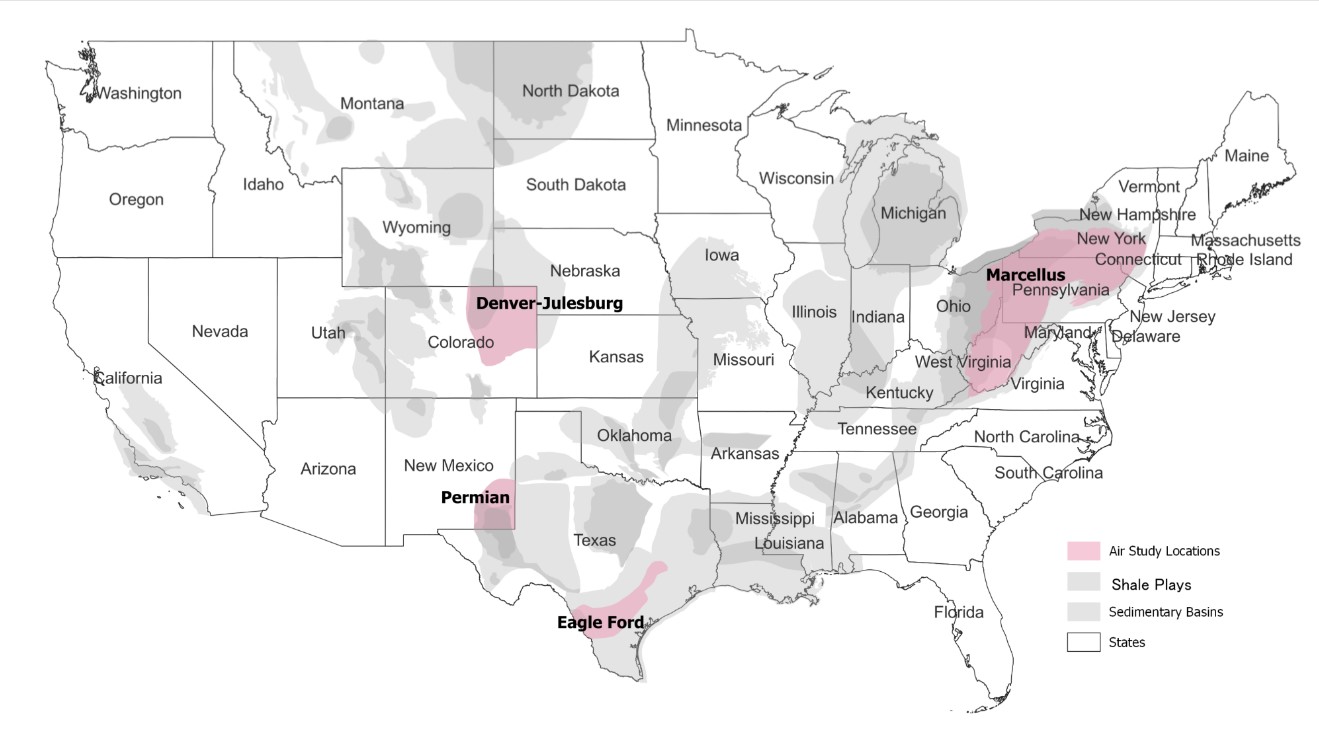Air Emissions and Noise Exposure
Tracking Community Exposures and Releases (TRACER) Collaboration
A collaboration of three research teams conducted air quality and noise research in Colorado, New Mexico, Texas, and part of the Marcellus region overlapping Ohio, Pennsylvania, and West Virginia. The research collaboration assessed potential links between short and long-term population exposures and specific unconventional oil and gas development (UOGD) processes.
The collaboration consists of two primary components:
Modeling Exposure: Developing and evaluating a new model called TRAcking Community Exposures and Releases (TRACER). The model is designed to predict chemical emissions and their effects on local and regional air quality. The model can be applied anywhere in the United States. As UOGD emissions inevitably change over time, TRACER will be able to account for and reflect corresponding changes in potential exposure.
Measuring Exposure Monitoring air quality and noise to improve the understanding and quantifications of potential short- and long-term human exposures in multiple regions of the United States. The monitoring programs were conducted in a way that maximizes the ability to transfer knowledge gained to other locations. A subset of the air quality data were used to evaluate and refine the TRACER model.
A StoryMap providing an interactive overview of the TRACER Collaboration can be found here.



